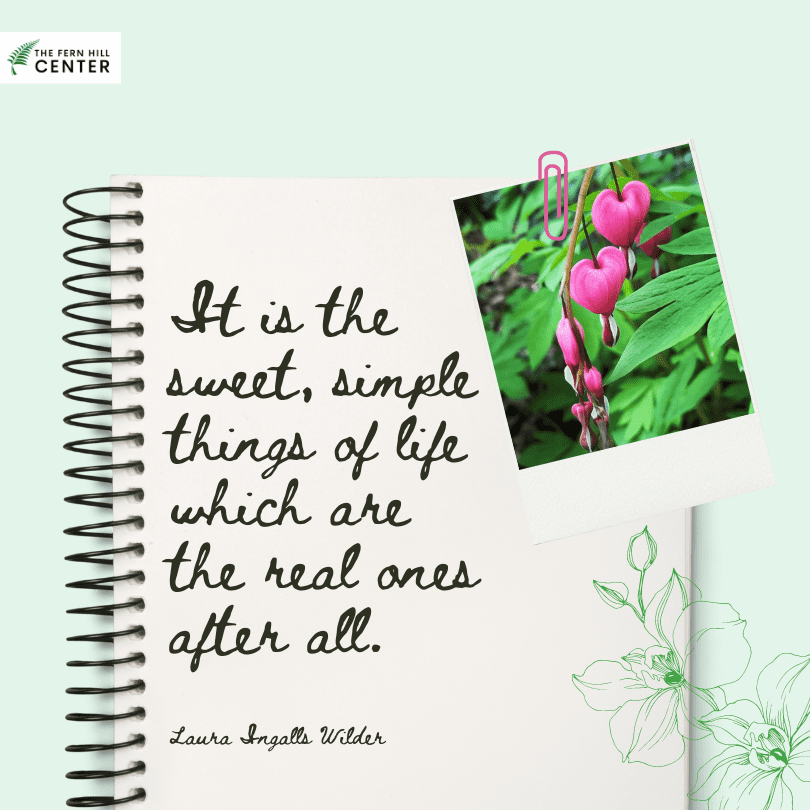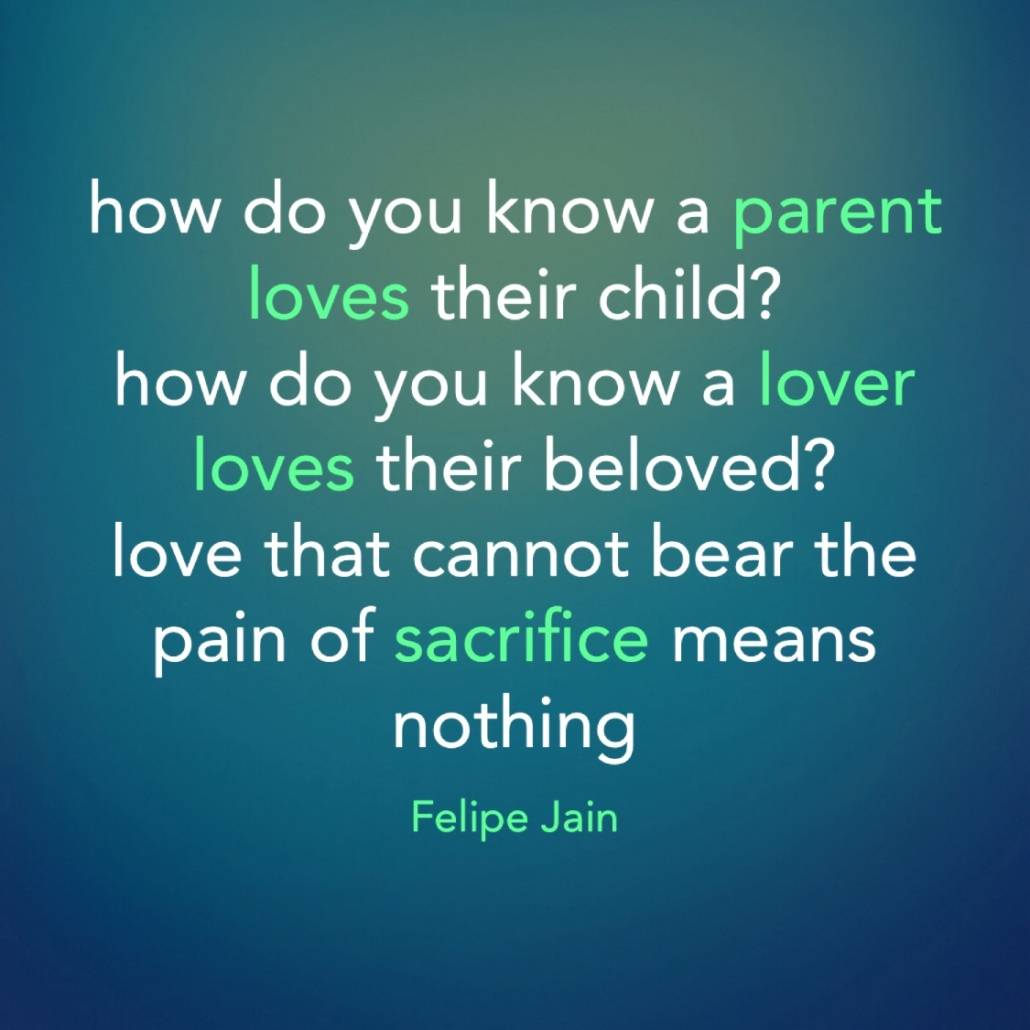Do you ever have moments when things get so busy and emotions surge to the point you’re not really sure why you’re doing what you’re doing anymore? If so, this quote is for you. Return to paying attention to the moment. To what is going on in your body and heart. To your breath. To a kind word to another. We would like to thank Neil Adari for allowing us to use his beautiful photo of lamprocapnos spectabilis, which produces hearts that can be seen for a few weeks in spring — coming soon here in the northeast!
When we give of ourselves, we sacrifice
When that gift is not received, we feel the pain of sacrifice
How do we continue to give?
How do we remember our love, in the heat of sacrifice?
We bring the other inside.
We imagine them as they are.
Each quality they have.
Their origins.
I did not have an inkling of what bliss was until a little over a year ago. Although I had experienced joy and happiness with others in my life and internally in meditation, it all paled in comparison with bliss. Bliss is a spontaneous arising of a happiness so powerful that it stops the mind and fills the body. It is a state of experiencing pure consciousness, pure awareness. When others come to mind during this experience of bliss, the feeling toward them is one of pure, unadulterated love. As I reflect on what love has felt like even before bliss arose a year ago, there has always been at least a tiny bit of this bliss. True bliss is the energy that powers love.
Once you’ve decided you actually want to do a practice like meditation or guided imagery, you’ve got the “big M” motivation – you see the ultimate value of it in your life. Then one of the biggest barriers to starting up meditation is inertia. Overcoming inertia requires boosting that “little m” motivation – the day-to-day drive to get yourself going. How often have you felt, “I don’t have the motivation for this?” It’s a real difficulty.
On the one hand, many people feel better quickly when they meditate or practice guided imagery. On the other, it sometimes is difficult to remember how it can impact survival – it’s not immediately about filling your stomach or protecting you from predators, or helping you figure out how to keep your shelter intact. While it may help all of those things over time through its various benefits for brain health, improving focus, and strengthening relationships, closing your eyes and detaching from the immediate environmental stimuli that beckon so appealingly for even a few minutes is extremely challenging.
If getting started is your challenge, it can be helpful to think about the two types of reinforcement that you can use to modify your behaviors. One is negative reinforcement, or avoiding an unpleasant experience. When you are a newcomer to meditation and don’t have a long history of feeling its benefits, it can be hard to use this practically because when you are in the middle of strong emotions – such as anxiety or low mood – it doesn’t often feel like you can truly get out of that emotion by using meditation. Perhaps some people can hold that perspective, but at least in my experience, not the majority.
The other type of reinforcement is positive. Now this can help you with starting a practice. Take a look at the video above of BF Skinner training a pigeon to turn in a circle. A pigeon. To turn in a circle. Crazy! Easy! Surprisingly easy! And it is the same with you. The fact is that if you associate your meditation practice with an immediate “survival” reward – such as a favorite food – you will get into the habit of meditating fairly readily.
Here’s where many people get it wrong. Many people deny themselves the reward if they don’t do everything they set out to do. They feel like they shouldn’t be able to have that special reward (Cup of tea? Piece of chocolate? Delicious fruit?) unless they 100% complete what they said they would do. But that wouldn’t work for a pigeon – and it won’t work for you either. You have to reward the small movements toward the goal – just like BF Skinner did with the pigeon – in order to help your brain accomplish the bigger task.
So the first time, perhaps you get your reward just if you turn on the recording – not even if you actually sit and do it. Perhaps the next time, when you sit and meditate even for 30 seconds. You get the full reward, to train your brain. Because we are not pigeons, there are other rewards you can use besides food as well. A favorite song. Doing a happy dance. Smiling. Juggling. Playing the guitar. Playing a board game or a computer game.
Once the habit has sunk in, you can reduce the amount of the reward, or the frequency you give it to yourself. But actually getting started with a new practice is often worth the temporary indulgence.
When I first arrived at Harvard Med as a student, I was quite intimidated… and even more so when I returned as a faculty member! So many emotions – wanting to do a good job, remembering what it was like when I was a student, a certain level of “imposter syndrome” regarding my own capacities. Of course, these are all emotions that I identify as associated with my ego, or my historical sense of self in time. It is very different from the sense of universal inspiration, from that sense of love, joy and bliss that inspires these pages!
It is not that I am two different people – sharing here versus teaching there – but that my capacity to live in the spontaneous bliss that arises in meditation varies in part depending on environmental triggers. That sense of “fight or flight” – jitteriness, wobbly legs, anxiety – is much heightened when in front of a classroom full of a skeptical audience. Fortunately, with more experience and also through intentionally breathing and using the imagery practices of the Fern Hill Center (which I developed but continue to learn from), I have learned how to more easily relax into the teaching role.
My students at Harvard Med come from very diverse backgrounds. From these, the perceptions of meditation and relaxation skills vary. The ability to learn the techniques also varies – including being able to learn simple diaphragmatic breathing. For some, it arouses tension that breathing exercises have always left them with – a sense of unease or anxiety that is perhaps related to trauma, or perhaps an aspect of their character and how their own “fight or flight” system is wired. For others, the techniques seem to make no difference – at least immediately. For others, they can truly relax into the techniques and gain a tremendous amount in a short period of time.
While it is understandable that some might have different responses, I believe this also points for a need for us to better understand how to teach beginners mindfulness techniques. Our best research literature shows that some people naturally respond better to others to mindfulness. There is no one size fits all. Yet for those who are able to do them, the benefits are vast. The next step, in my view, is to innovate in the medical education setting by identifying those for whom mindfulness training has not been immediately successful, and to provide them with different kinds of relaxation skills learning – perhaps technology augmented – to see what appears to make the most difference for them.
Because burnout in the profession of medicine is increasing, and doctors are at even higher risk than the general population of committing suicide, figuring out how to best teach these techniques to boost resilience and coping skills to future physicians is critically important. My friends in the profession would note that changing the systems that cause physician burnout are also pressing – and I believe that as well. In my view, they are the two wings that will enable physicians not only to experience job satisfaction, but to thrive – and even to know bliss.
Our work
Dedicated to freely spreading practices that bring greater joy, compassion and connection.
Disclaimer
The information on this website is for educational purposes only; it is not a substitute for evaluation and treatment by a licensed health professional.
Please note
Despite the academic affiliation and employment of some authors, the views on this website do not represent those of Harvard Medical School or the Massachusetts General Hospital.
Contribute
If you would like to contribute to our work, please consider making a tax deductible contribution to the Massachusetts General Hospital Healthy Aging Studies Fund.




